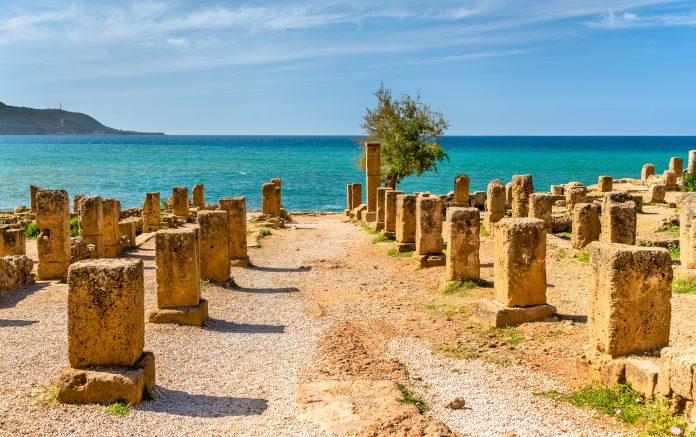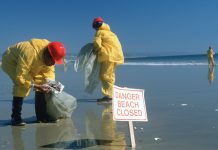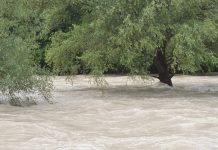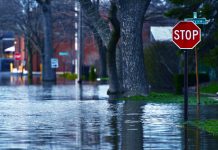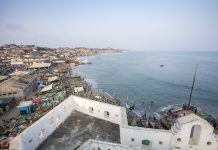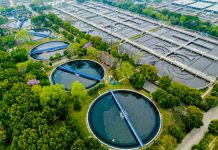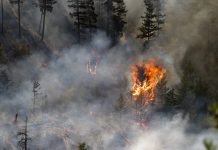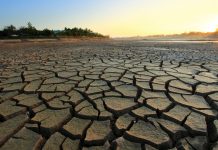The African coast – along with its numerous heritage sites – are at risk of being damaged and lost to extreme sea levels and erosion
Climate risk and heritage experts have found that 56 heritage sites – which is 20% – are at risk from a one-in-100-year extreme sea-level event, including the iconic ruins of Tipasa in Algeria, and the North Sinai archaeological Sites Zone in Egypt.
Researchers have provided the first broad assessment of exposure of African cultural and natural heritage sites to extreme sea levels and erosion associated with accelerating Sea Level Rise.
All located across the African coast, numerous historical and cultural places in the Heritage of Outstanding and Universal Value is at risk from climate change, including events of mass flooding and erosion of the coastline which will damage these artefacts
Some other well-known cultural sites at risk is the Lobé Waterfalls in Cameroon, which is a globally unique set of waterfalls up to 20 metres high that flow directly into the Atlantic Ocean. Another can be seen in Kunta Kinteh Island, which is a Gambian site that serves as a historical remembrance to those lost to the slave trade.
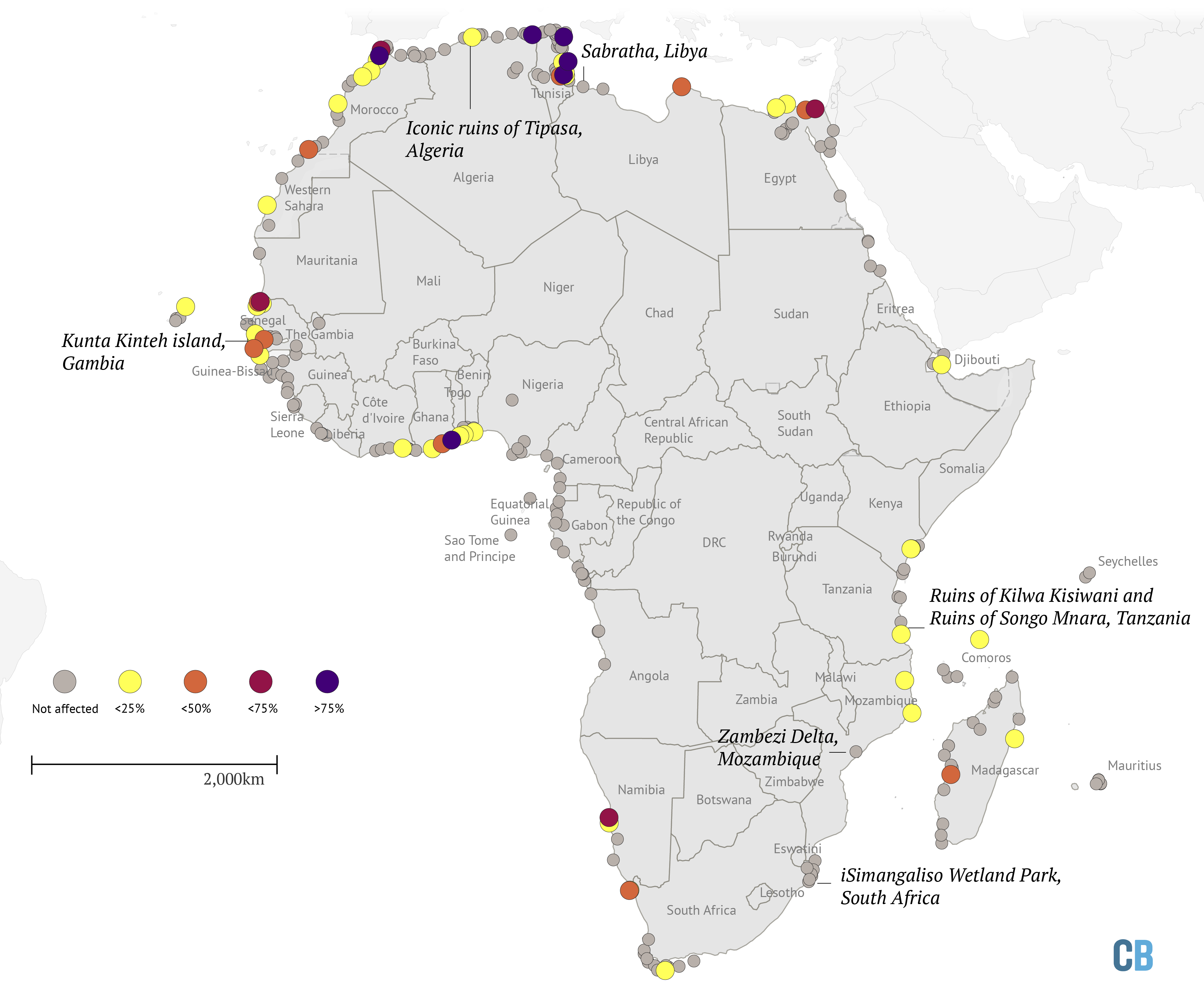
Mapping the physical boundary of 284 African coastal heritage sites
A global team of climate risk and heritage experts modelled the exposure of each site at future global warming scenarios. Stating that: “By 2050, the number of exposed sites is projected to more than triple, reaching almost 200 for high emissions”.
The research, published in Nature Climate Change, estimates that around 151 natural and 40 cultural sites will be exposed to the 100-year event from 2050 onwards, regardless of the warming scenario. These daunting results demonstrate the severe need for climate change adaptation, as well as mitigation tactics to reduce the exposure of these iconic heritage sites.
The authors explained: “If climate change mitigation successfully reduces greenhouse gas emissions from a high-emissions pathway to a moderate emissions pathway, by 2050 the number of highly exposed sites can be reduced by 25%. This would be a significant saving in terms of Loss and Damage from climate change.
“There are several countries which are projected to have all their coastal heritage sites exposed to the 100-year coastal extreme event by the end of the century, regardless of the scenario: Cameroon, Republic of the Congo, Djibouti, Western Sahara, Libya, Mozambique, Mauritania, and Namibia”.
They also calculate that under the worst-case scenario, this could become a reality for Côte d’Ivoire, Cabo Verde, Sudan and Tanzania.
Additionally, this will affect important bird migration routes, waterways which are vital for coastal fishing communities, as well as the archaeological sites containing vital histories on the evolution of humans.
These threats are set to triple by 2050
The authors solemnly added: “This is very concerning because none of these countries currently demonstrate adequate management or adaptive capacity to anticipate or establish heritage protections commensurate with the severity of these hazards.
“Small island heritage sites are especially at risk. For example, Aldabra Atoll, the world’s second-largest coral atoll, and Kunta Kinteh Island (The Gambia) could both see significant amounts of their extent exposed by 2100 under high emissions raising questions of their survivability under climate change.
“These findings help with prioritising sites at risk and highlight the need for immediate protective action for African Heritage Sites; the design of which requires in-depth local-scale assessments of vulnerability and adaptation options.
“Urgent climate change adaptation for heritage sites in Africa includes improving governance and management approaches; site-specific vulnerability assessments; exposure monitoring; and protection strategies including ecosystem-based adaptation”.
Editor's Recommended Articles
-
Must Read >> Only 15% of coastal areas are still intact, globally



